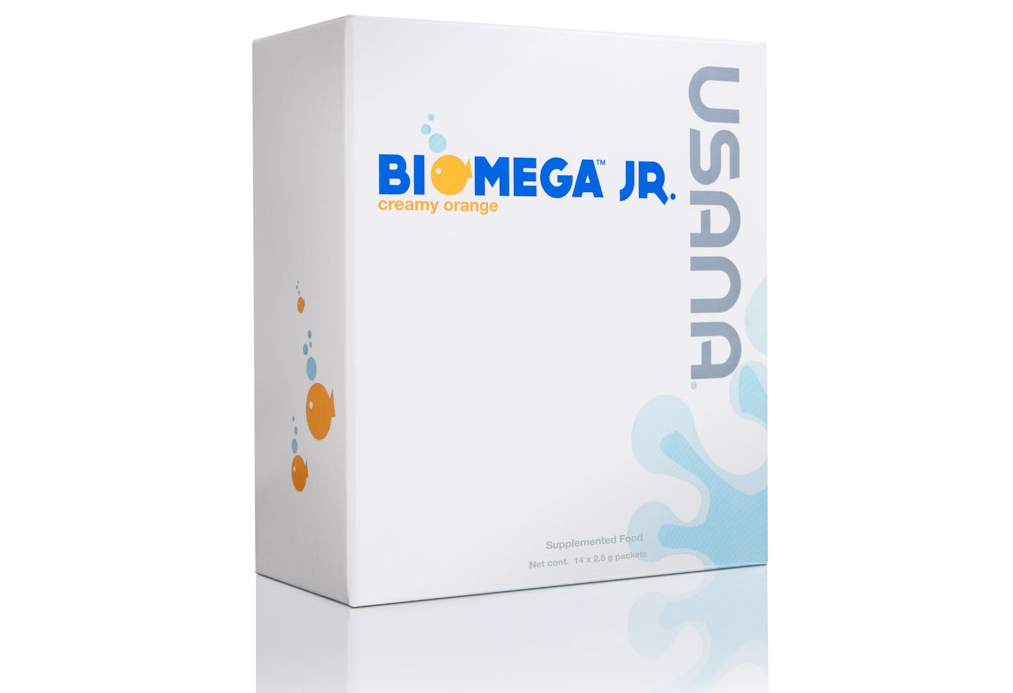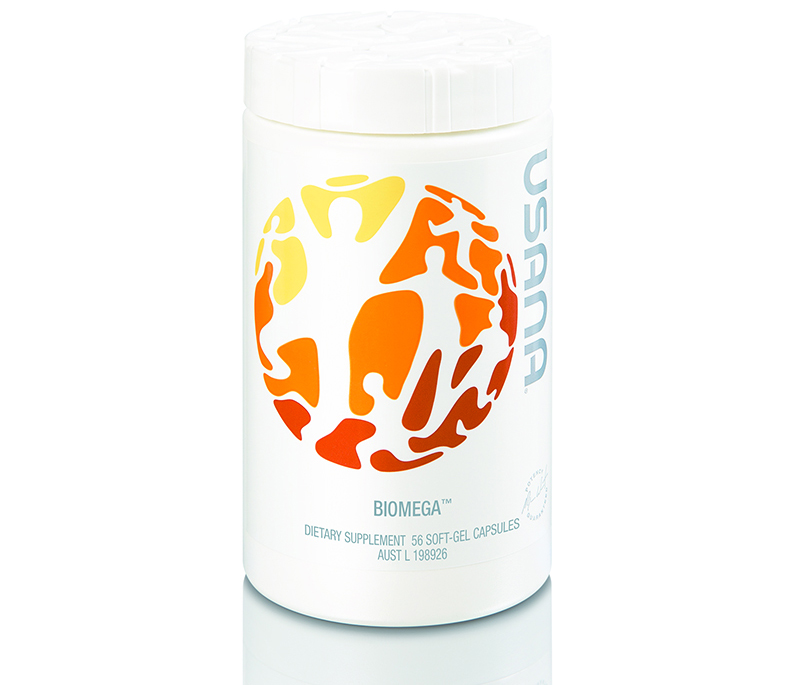The post Omega-3 For Kids Concentration appeared first on Usana Health Sciences Organization.
]]>
Enter the good fats. As you may already know, oily fish is the richest source of omega-3 fats and are important for a whole host of functions including eye health and for the correct running of parts of the brain used for memory, learning and reasoning behaviour.
In the body, DHA is concentrated in the brain. The two most important omega-3s in human health are docosahexaenoic acid (DHA) and eicosapentaenoic acid (EPA) – which are fundamental to brain function.
Here’s what we know about omega-3s and how they impact children’s mood, learning and behaviour…
Fish oil and behaviour
Australian research published in The Journal of Developmental and Behavioral Pediatrics, found improvements in parents’ ratings of their children’s hyperactivity and inattention after being given fish oil.
ADHD and low omega-3s
ADHD has now become the most common childhood development disorder, that is also likely to carry on into adolescence and adulthood.1
Children with ADHD are more likely to show symptoms of having low blood levels of omega-3s, such as dry skin and hair and excessive thirst. Some studies have shown that increasing omega-3 levels reduces the severity of ADHD-type behaviour such as difficulty in focusing and paying attention in some children, too.
One study in the Journal of Physiology & Behavior, found that both ADHD and non-ADHD boys between the ages of 6 and 12, who had low omega-3 levels, were associated with a range of behavioural and learning problems, irrespective of the clinical diagnosis.2
Reading ability
Other studies have linked fish oils with improvement in reading ability. One particular research, led by the University of Oxford in the UK, showed that some children with reading difficulties displayed improved reading after taking fish oil. And in the group of children with the lowest 10 per cent reading ability, reading age improved the most. So, it may be that getting enough omega-3s may help children catch up with peers.
Although other research had linked benefits of omega-3s in children with conditions such as ADHD, dyslexia and developmental coordination disorder, this was the first research to show positive results in children from the general school population.
Are your kids low on omega-3s?
If you tend to steer away from giving your kids oily fish like salmon, sardines, mackerel and organ meats such as brains (most of us do!), then chances are they are falling short of the recommended omega-3s in their diet.
Research by Professor Barbara Meyer from the University of Wollongong found that three-year-olds consumed an average of only 47 milligrams (mg) of long chain omega-3s, and four- to eight-year-olds had just 55mg daily which is approximately a tenth of the Heart Foundation’s target of 500mg per day.
It is estimated that just six per cent of Australian children are meeting the recommended dietary intake of omega-3 fats.
Give your kids the best start to the school year with BiOmegaTM Jr!
Fish oil: safety
Fish oil is generally considered safe unless your child has a sensitivity to fish, has a bleeding disorder and or/is taking a blood thinning medicine. They vary a lot in their content and quality. BiOmega Jr. is a great choice because it has:
- High levels of EPA and DHA – two of the most important constituents in omega-3 fats
- Is a pharmaceutical grade fish oils supplement
- Is distilled to be free from mercury.
If your child is taking medication, speak to your child’s doctor before offering any supplements. Fish oil should not be used instead of the usual medication.
USANA’s BiOmega Jr.
An easy and tasty way for children to get the valuable DHA and EPA they need for a healthy body and to support overall good health.
- There’s no need to struggle with the capsules because BiOmega Jr. comes in tasty sugar-free, orange flavoured gel.
- Doesn’t have any fishy taste nor any fishy after-taste.
- Available in convenient single-serve pouches that the kids will love to open.
- Can be taken straight from the packet or stir it into yogurt or other creamy foods like custard.
- For best results, store in the refrigerator and serve cold.
- Naturally sweetened with stevia.
- Delicious creamy orange flavour.
- 14-Pack of convenient single-serve packets (offer one every other day).
We didn’t forget about you adults either
We also have a high-quality, ultra-pure natural fish oil supplement for you too! Omega-3 fatty acids are important for optimal health and wellness. It can be difficult to receive the proper balance because refining processes for today’s commercial oils remove nearly all essential omega-3 fatty acids. BiOmega supplies the important omega-3 fatty acids EPA and DHA in a convenient capsule form. These nutrients help support normal, healthy heart function, nerve and myelin function and helps maintain good joint health.
Now you can feel sufficiently prepared for sending your kids back to school, with the help of Omega-3s!
The post Omega-3 For Kids Concentration appeared first on Usana Health Sciences Organization.
]]>The post Omega 3 and skin health appeared first on Usana Health Sciences Organization.
]]>Our skin is the largest and most visible organ in our bodies, acting as a protective shield deflecting potentially harmful environmental elements. It might look like nothing much but if you delve deeper down you’ll find out that our skin is the product of countless complex processes occurring every millisecond. Skin is far smarter than you think and has adapted for use in different areas of the body – from the temperature-regulating armpits to the soles of our feet.
Ignoring skin problems is extremely hard so we must do all we can to ensure that our skin is at its optimal health every day. Remember, prevention and general upkeep is far more effective than damage control and treatments.
External pressures on skin health
Skin deterioration and damage is undeniably endured on a daily basis. And like every other organ, our skin constantly works to repair itself. As you can imagine, with an immense amount of pressure, the integrity of your skin suffers and if we don’t reinforce our protective barrier it might just collapse.
Skin dryness is a fact of life that severely impedes our skin’s ability to function efficiently. How does our skin get dry you might ask. The water we wash ourselves with everyday has chlorine added which naturally dries out the skin and being indoors with air-conditioning on throughout the day dehydrates your body as well as skin.
If you couple dryness with poor hygiene or genetic predisposition to skin irritation or inflammation, then you could have a big problem on your hands. Now imagine adding the daily stresses of life into the mix as well! Can you now see how at risk your skin health is? There are hundreds of thousands of New Zealanders with skin conditions and the rate of incidence is growing dramatically each day.
Simple things like having good sleeping habits, relaxing or meditating, and eating a healthy well-balanced diet go very far in helping to ensure optimal skin health. But these are usually not sufficient enough to meet our needs.
It has been found that in addition to good general nutrition, omega-3 fats are one of the major components of healthy skin. Omega-3s are vital as they make up the outer hydrophobic, water hating, part of skin cell membranes. They work as gatekeepers by controlling the movement of substances in and out of skin cells. On top of that they influence our skin cell’s ability to hold onto water, contributing to moister and softer skin, by helping to repel water which can cause dryness.
We know omega-3 fatty acids are essential for good health but eating the right foods to get the right doses can be quite tricky. Modern diets contain far less omega-3s than your daily recommended intake. This is a result of manufacturers mainly using less beneficial omega-6 fats instead, a low consumption of fish per week per capita, and a preference for foods that don’t contain omega-3 fats.
Now this where supplementation comes in! Your body can’t make omega-3s so you need to get them from other sources, such as food or supplements. Plant sources include walnuts and flax seeds but omega-3s are also found in the oil from fatty fish, like salmon or mackerel.
 As far as skin is concerned, omega-3 fats help to:
As far as skin is concerned, omega-3 fats help to:
• Nourish the skin.
• Hydrate the skin by encouraging skin cells to retain natural moisture.
• Encourage the maintenance of healthy skin cells.
A good quality fish oil is a good way to ensure adequate omega-3s and is generally safe unless you are sensitivity to fish oils, are taking a blood-thinning medicine, or you’ve been advised by a medical professional not to take the supplement.
 Why not give your kids BiOmegaTM Jr.?
Why not give your kids BiOmegaTM Jr.?
Children are far more susceptible to developing skin conditions due to poorer hygiene, a weaker immune system, and a heightened exposure to skin irritants. Because of this, it is extremely important to have a protective system in place to help your child cope with all the health stresses they encounter every day.
Fish oil supplements vary a lot in their content and quality. You must make sure that you choose a supplement that is high quality, has the right amount of omega-3 fats in the right forms, and meets all regulatory standards.
BiOmegaTM Jr. is a great choice because:
• It has high levels of EPA and DHA – two of the most important constituents in omega-3 fats.
• It uses natural sweetener only, with a creamy orange flavour that all children will love.
• It is packaged in single-serve packets for convenience and personalisation.
• It is manufactured under the most stringent standards, ensuring that what is written on the label is actually in the capsule and in the exact same amounts.
Click here to buy BiOmegaTM Jr. now!
Vitamin supplements should not replace a balanced diet. Use only as directed. Always read the label.
The post Omega 3 and skin health appeared first on Usana Health Sciences Organization.
]]>




